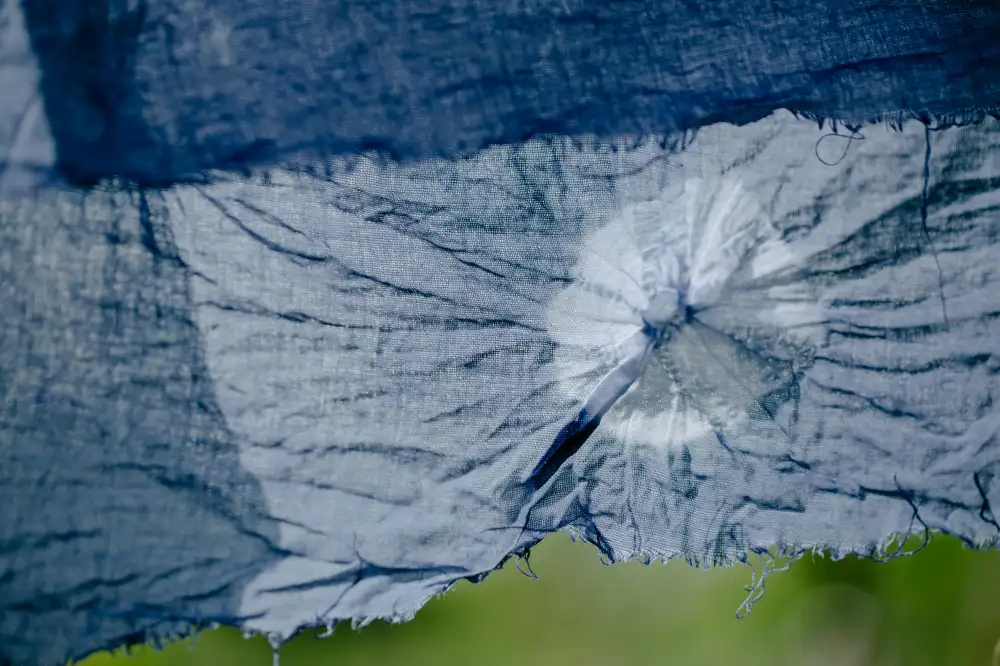Revive Your Rusty Cast Iron Skillet: A Step-by-Step Guide to Restoring Its Shine

- Gather the necessary supplies for cleaning
- Preparing the skillet for cleaning: Removing any food debris
- Method 1: Using salt and oil to remove rust
- Method 2: Using vinegar and baking soda to remove rust
- Method 3: Using a potato and dish soap to remove rust
- Scrubbing the skillet gently with a scrub brush or sponge
- Rinse and dry the skillet thoroughly
- Seasoning the skillet to prevent future rusting
- Storing the skillet properly to maintain its condition
A cast iron skillet is a beloved kitchen tool that can last for generations if properly cared for. Not only does it provide exceptional heat retention and even cooking, but it also adds a unique flavor to dishes. However, without regular cleaning and maintenance, these skillets can become rusty and lose their shine. In this step-by-step guide, we will explore various methods to revive your rusty cast iron skillet and restore its former glory. By following these techniques, you can ensure that your skillet remains in pristine condition and continues to be a true expression of love in your cooking journey.
Gather the necessary supplies for cleaning
To restore the shine of your rusty cast iron skillet, you will need a few essential supplies. First and foremost, gather some coarse salt or kosher salt, which will act as an abrasive to remove the rust. Additionally, you'll need a bottle of vegetable oil or any other cooking oil to help loosen the rust. Another option is to have white vinegar and baking soda on hand, as they can work wonders in removing stubborn rust stains. Lastly, grab a scrub brush or sponge that won't scratch the surface of your skillet. With these supplies ready, you're well-prepared to tackle the restoration process and bring back the beauty of your cast iron skillet.
Preparing the skillet for cleaning: Removing any food debris
Before you begin the process of cleaning your cast iron skillet, it's important to prepare it by removing any food debris. Start by scraping off any large pieces of stuck-on food using a spatula or a plastic scraper. Be gentle to avoid scratching the surface of the skillet. Next, use a paper towel or a soft cloth to wipe away any remaining residue. If there are stubborn bits that won't come off, you can pour some hot water into the skillet and let it sit for a few minutes to loosen them. Then, empty the water and wipe the skillet clean again. By ensuring that your skillet is free from food debris, you'll be able to focus on removing rust effectively in the next steps.
Method 1: Using salt and oil to remove rust
One effective method for removing rust from your cast iron skillet is by using a combination of salt and oil. Start by sprinkling a generous amount of coarse salt onto the rusty areas of the skillet. Then, pour a small amount of vegetable oil onto the salt.
Using a cloth or paper towel, rub the salt and oil mixture onto the rusty spots in a circular motion. The abrasive nature of the salt will help to loosen and lift the rust, while the oil acts as a lubricant.
Continue rubbing until you see that the rust is starting to come off. You may need to apply more salt and oil as you go along. Be sure to cover all areas affected by rust.
Once you are satisfied with the results, rinse off the skillet with warm water. Use a scrub brush or sponge to gently remove any remaining rust particles.
Finally, dry the skillet thoroughly with a clean towel or by placing it on low heat on your stovetop for a few minutes. This will prevent any moisture from causing further rusting.
By using this simple yet effective method, you can restore your cast iron skillet's shine and ensure its longevity in your kitchen.
Method 2: Using vinegar and baking soda to remove rust
Another effective method for removing rust from your cast iron skillet is by using a combination of vinegar and baking soda. Start by filling a sink or basin with equal parts of water and white vinegar. Submerge the rusty skillet in the solution and let it soak for at least one hour, or overnight if the rust is stubborn.
After soaking, remove the skillet from the vinegar solution and sprinkle a generous amount of baking soda onto the rusted areas. Use a scrub brush or sponge to gently scrub the baking soda into the rust, applying some pressure as needed. The combination of vinegar and baking soda will create a chemical reaction that helps to loosen and dissolve the rust.
Continue scrubbing until all traces of rust have been removed. Rinse the skillet thoroughly with warm water to remove any remaining residue. Make sure to dry it completely with a clean towel to prevent any new rust from forming.
Using vinegar and baking soda is an affordable and environmentally friendly way to restore your cast iron skillet's shine. Give this method a try, and you'll be amazed at how easily it removes even stubborn rust stains, leaving your skillet looking brand new again.
Method 3: Using a potato and dish soap to remove rust
Another effective method for removing rust from your cast iron skillet is by using a potato and dish soap. This technique works well for smaller areas of rust.
To begin, cut a raw potato in half and dip the cut side into a small amount of dish soap. Rub the soapy potato onto the rusty areas of the skillet, applying gentle pressure. The acidity in the potato combined with the cleaning properties of the dish soap will help break down and lift off the rust.
Continue rubbing until you see the rust starting to come off. If needed, you can also use a scrub brush or sponge to assist in loosening stubborn rust spots.
Once you have removed all the rust, rinse the skillet thoroughly with warm water to remove any residue. Dry it completely with a clean towel or paper towels.
Using this method not only helps to remove rust but also leaves your skillet smelling fresh and clean. It's an easy and natural way to restore your cast iron skillet's shine without using harsh chemicals.
Now that your skillet is free from rust, it's time to move on to the next step: scrubbing it gently with a scrub brush or sponge.
Scrubbing the skillet gently with a scrub brush or sponge
Once you have removed the rust from your cast iron skillet using one of the methods mentioned earlier, it's time to scrub away any remaining debris. Gently scrub the skillet with a scrub brush or sponge, making sure to cover all areas, including the sides and bottom. Avoid using steel wool or any harsh abrasive materials as they can damage the seasoning of the skillet. The goal is to remove any loose particles and smooth out the surface. Take your time and be thorough in this step to ensure a clean and shiny finish.
Rinse and dry the skillet thoroughly
Once you have finished scrubbing the skillet, it is important to thoroughly rinse and dry it. Rinse the skillet under warm running water, making sure to remove any remaining soap or cleaning solution. Use a clean towel or paper towels to dry the skillet completely. It is crucial to ensure that no moisture remains on the surface of the skillet, as this can lead to rusting. Take your time and make sure every inch of the skillet is dry before moving on to the next step.
Seasoning the skillet to prevent future rusting
To prevent future rusting and maintain the shine of your cast iron skillet, it is crucial to season it properly. Seasoning creates a protective layer on the surface of the skillet, preventing moisture from coming into direct contact with the iron.
To season your skillet, start by preheating your oven to 350°F (175°C). Next, apply a thin layer of vegetable oil or melted shortening to the entire surface of the skillet, including the handle. Make sure to coat both the inside and outside.
Place the skillet upside down on the middle rack of your oven and bake for one hour. This process allows the oil to penetrate and bond with the iron, creating a smooth and non-stick surface.
After an hour, turn off the oven but leave the skillet inside until it cools down completely. This slow cooling process helps in further strengthening and bonding of the seasoning.
Once cooled, your cast iron skillet is ready for use. Remember to always clean it gently after each use using mild dish soap or just hot water. Avoid using harsh scrub brushes or abrasive cleaners that can damage the seasoning.
By regularly seasoning your cast iron skillet, you will not only prevent rusting but also enhance its natural non-stick properties. So go ahead and enjoy cooking with a well-seasoned and rust-free cast iron skillet!
Storing the skillet properly to maintain its condition
Storing your cast iron skillet properly is crucial to maintaining its condition and preventing rust. After cleaning and drying the skillet, make sure it is completely cool before storing. Avoid stacking other heavy pots or pans on top of it, as this can cause damage. To prevent moisture buildup, place a paper towel or cloth inside the skillet to absorb any excess moisture. Store the skillet in a dry place with good ventilation, away from any sources of moisture. Consider using a cast iron skillet cover or a clean dish towel to protect it from dust and debris. By following these simple storage tips, you can ensure that your cast iron skillet remains in great condition for years to come.
In conclusion, by following these simple steps, you can revive your rusty cast iron skillet and enjoy cooking with it for years to come. A clean and rust-free skillet not only enhances the taste of your food but also ensures its longevity. Remember to regularly clean and season your skillet to prevent rust from forming again. With proper care, your cast iron skillet will continue to be a cherished kitchen tool that brings joy and delicious meals to your table. Happy cooking!
Published: 13. 02. 2024
Category: Home



